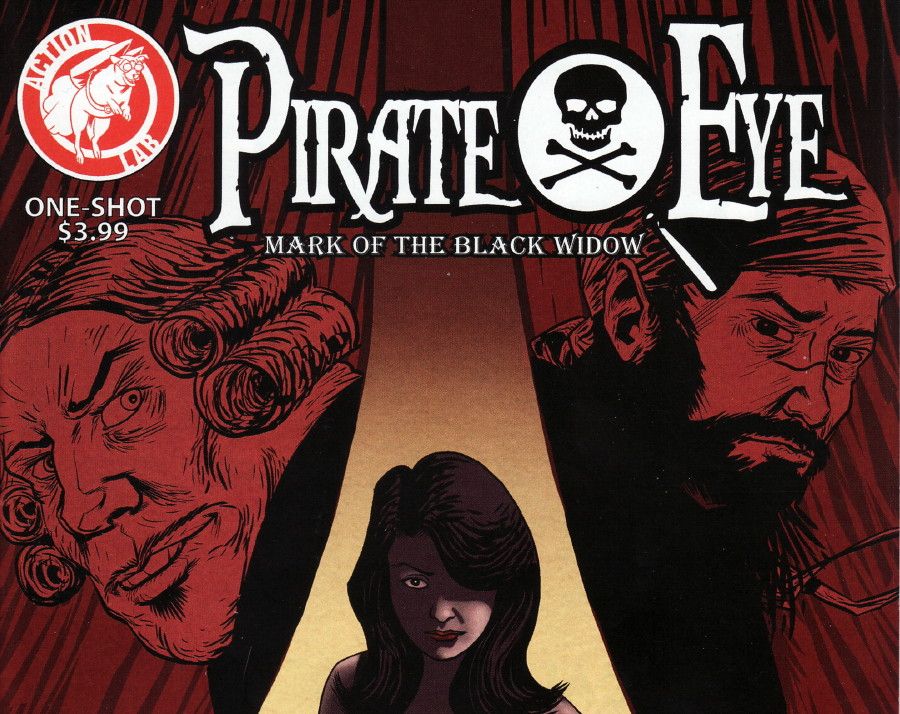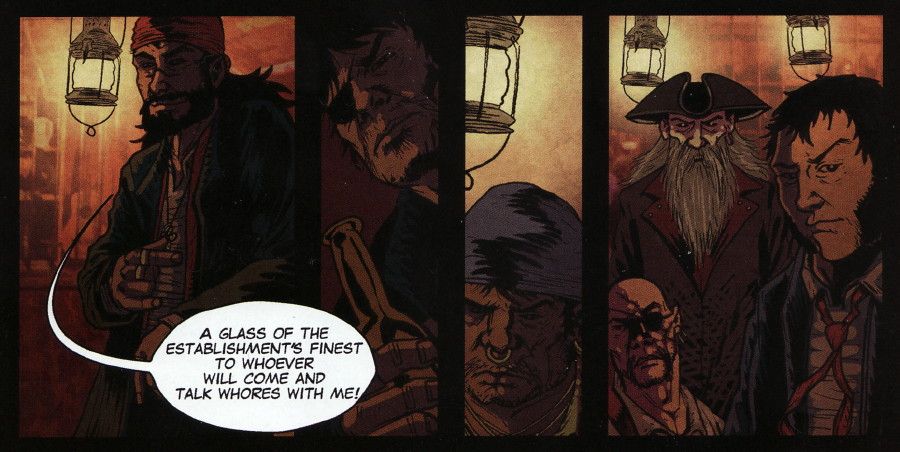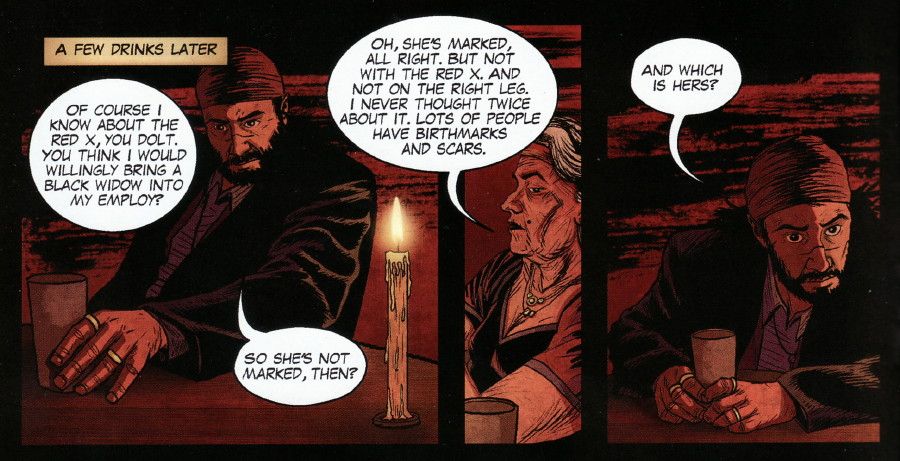At some point I heard Joe Grahn and Carl Yonder’s Pirate Eye described as “pirate noir,” and for me, the words suggested a mash-up of Pirates of the Caribbean and The Maltese Falcon. I figured it must take place in a fantasy world where fedoras and jazz lived side by side with cutlasses and lace. That would be fun concept, appropriate to the silly title, but I’m grateful to have been wrong about it.
Despite the pun, Pirate Eye is a comic that deserves to be taken seriously. It's set in the real world during the historical age of piracy, and there’s nothing goofy about it. The main character Smitty is a former buccaneer who now uses his talents for good – or at least, legal – purposes. As he explains it, there’s not a lot of difference between seeking out treasure to take it from someone, and finding it on that person’s behalf. The big distinction is that Smitty gets paid for the latter instead of risking the gallows. Using that premise, Grahn and Yonder will be able to tell all sorts of noir-ish detective stories in the seedy streets of a Caribbean town.
One of my favorite things about the series, though, is the kind of stories its creators are interested in telling: Instead of an ongoing series – or even the series-of-miniseries approach – they’re releasing Pirate Eye as a series of self-contained one-shots. I believe it was Ellery Queen who said short stories are the perfect medium for mysteries. They allow the storyteller to get in and out quickly, focusing only on the mystery itself without a lot of extra baggage to slow things down. Grahn makes good use of that in the first one-shot “Mark of the Black Widow,” about a wealthy man in love with a prostitute, but unsure if he can trust her. She has a scar that marks her as having killed a customer once, so he hires Smitty to find out whether the symbol is justified.
It’s a straightforward mystery, but what makes it stand out – besides the uniqueness of its setting – is the mood and atmosphere that Yonder bring to it. He has a scratchy style that highlights the roughness of the world while also offering enough details to entice readers into it. His characters, for example, are all fascinating to look at, from scarred Smitty and his frog-like client, to the smooth-skinned prostitute and her weathered, old madame. Yonder also colors his own stuff and uses a rich, warm palette that helps differentiate scenes by varying the feel from location to location. Pirate Eye has a warm, inviting look that I’m going to want to revisit often. So much so that if I can’t wait for the next one-shot, I’ll just re-read this one.



